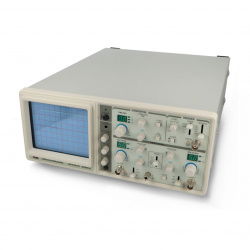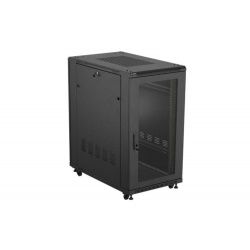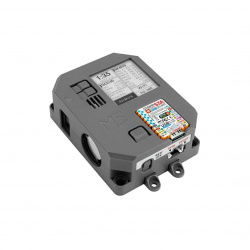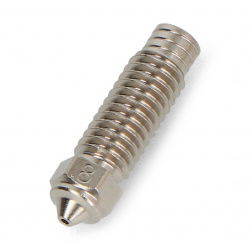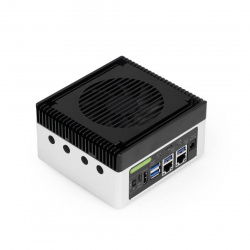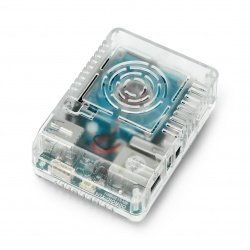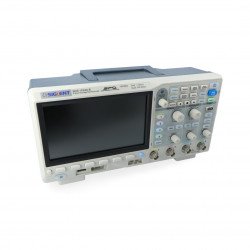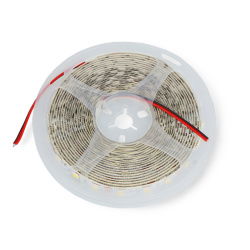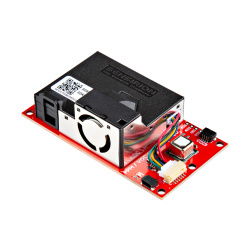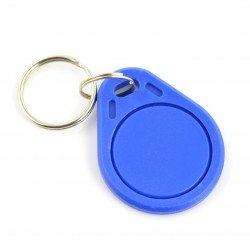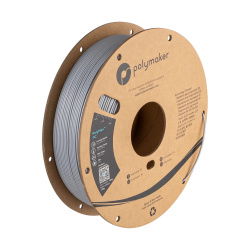Multipleksery 8 bitowe, kanałowe (wejściowe)
DFRobot Gravity: digital I2C multiplexer - 8-channel
Module with multiplexer that allows you to connect 8 different digital I2C buses to one interface, for each, there are separate pins SDA (bus of data line) and SCL (clock line...Lead expander - 8-channel - with I2C multiplexer - PCA9548 - STEMMA QT / Qwiic - Adafruit 5626
Module with a multiplexer equipped with the PCA9548 chip, which is a replacement for the popular TCA9548A chip. It allows you to connect up to 8 separate I2C digital buses...Module with analog-digital multiplexer 74HC4051 - SparkFun BOB-13906
Module with 8-channel multiplexer CD74HC4051 allows you to connect up to 8 signals to a single analog output. The system can work as a demultiplexer and work with digital...Qwiic Mux Breakout - 8-channel module with multiplexer I2C - TCA9548A - SparkFun BOB-16784
Module with a multiplexerem TCA9548A, allows you to connect 8 different digital I2C interfaces to one interface. Works with a supply voltage from 1.65 V to 5.5 V. The address...See also
Analogue multiplexers
The basic difference between analog and digital multiplexers is the way of building part of the semiconductor structure, which is responsible for proper switching of inputs. Analogue multiplexers are based in their construction on field transistors, connected in a way that enables simultaneous switching on and off of circuits, capable of conducting current in both directions. If it were not for such complementary transistor pairs, a given switch could only handle signals with a strictly defined polarity - the use of transistor pairs allows for trouble-free transmission of variable signals (in the voltage range usually from zero volts to the positive voltage of the circuit's power bus, e.g. 5 V), and in some cases even bipolar alternating voltages (which can take both positive and negative values in relation to ground - here, however, it is necessary to use a special type of multiplexer, allowing for symmetrical power supply of the analogue part). However, classic 8-bit multiplexers are often sufficient - e.g. extremely popular 4051 chip from CMOS 4000 family.
Digital multiplexers
A different group of circuits are digital multiplexers. Here we are dealing with a diametrically different construction of the switching part, based on logic gates and address input decoding system. The handling of analog signals would not be possible here, because already at the first stage of the switching part the voltage value is discredited to a low (L) or high (H) logical state - the original voltage level "does not go further" through the structure of subsequent blocks of the circuit. It is worth adding that this type of multiplexers can very rarely be found in the form of separate chips - the most commonly used chips (e.g. from the mentioned CMOS 4000 family) are analogue multiplexers. Purely digital" varieties, however, are very widely used in the structures of microcontrollers, programmable circuits and various types of digital integrated circuits with complex functionality. However, it should be remembered that many of the analogue multiplexers can also work with digital signals - since they are able to carry any waveforms not exceeding the power supply voltage, nothing stands in the way of these signals having binary values (e.g. 0V and 5V).
I2C expanders
A special variety of multiplexers are I2C rail expanders. As it is known, on one I2C bus not only one master and one slave can work at the same time - theoretically, several, several or even dozens of systems can be connected to it at the same time (in practice, such extensive networks are rarely used, but it is related to the phenomena associated with the limitation of switching frequency). It is important that each slave has a different call address, after which it will be able to respond to the master circuit with the confirmation bit (ACK/NAK) or the whole data frame. But what if you need to connect multiple systems (e.g. digital temperature sensors) with the same address at once? Then special 8-channel multiplexers, dedicated for I2C bus, come to your aid. A good example is TCA9548A from Texas Instruments. This small chip, on the basis of which a useful Adafruit 2717 module was created (available in our offer) allows to connect up to 8 separate I2C buses, selected by means of digital address inputs. Nothing prevents each of these "new" buses from being connected to a separate sensor - the same addresses of all slaves will not cause a collision on the data bus, because ... at a given moment only one of them will be visible for the bus.






























































































































































































































































































































